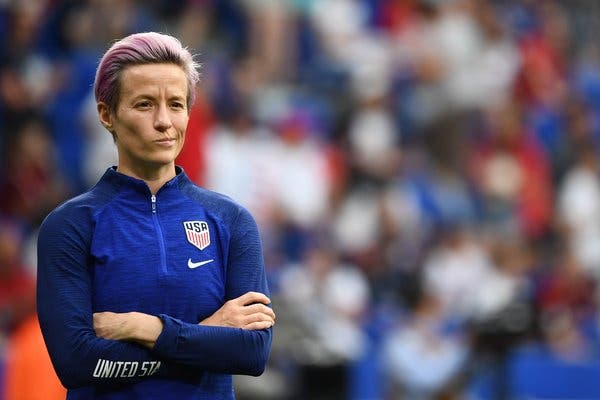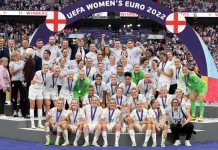Megan Rapinoe joked she intends “never to pay for anything” around the future stars of women’s football who will benefit from her equal pay battle.
The 2019 Ballon d’Or winner recently admitted the disparity between men and women’s pay is on her mind every time she pulls on the USWNT jersey. For a World Cup winner who has achieved so much for her country, it is her activism that is defining her legacy.
Rapinoe, who has also championed LGBT+ rights and hit out at her fellow professionals for not doing more to tackle racism, has been a long-standing advocate on the issue of the gender pay gap – but she is far from the only high-profile footballer to have spoken out.
A number of England’s Lionesses have also made comparisons regarding their salaries and those of the men’s team.
In English football, at least, there have been positive signs which hint at that gap being bridged in the future. The £24 million deal to show the Women’s Super League (WSL) on the BBC has been described as a “watershed” moment for the women’s game.
With men’s football clubs earning the majority of the income which supports their wage bills from TV rights, the financial backing of a major channel will benefit women’s football immeasurably.
Added media coverage will also lend itself to further sponsorship opportunities, further facilitating the financial incentives in the women’s game.
Yet the onus is still on clubs to step up in how they distribute those income streams. Where Manchester City have ostensibly combined their men’s and women’s team into ‘one’ set-up – referring to the women’s team as ‘Manchester City’ rather than ‘Manchester City Women’ – the question of equal pay remains unanswered.
It is a particularly contentious issue when it comes to the ‘superclubs’ who could afford to bridge the gap themselves.
The options are different for national sides, many of whom donate their match fees to charity.
Australia has set the example after their women’s national side reached a landmark agreement with the governing body to achieve equal pay, under which both the men’s and women’s sides would receive a fair cut of commercial income. The Football Federation Australia (FFA) used the opportunity to state that the Matildas were valued just as highly as their Socceroos.
Indeed, it’s telling that Rapinoe’s battle for equal pay relates chiefly to the international stage. This is where it is most achievable in the short term, with precedent already having been set.
Notwithstanding the financial issues of organisations like the English Football Association – the FA recently made significant cuts across its departments, resulting in swathes of redundancies – there would be potential to strike a similar long-term deal to the one seen in Australia.
Since January 2020, England has paid their men and women’s senior sides the same match fees and bonuses. In both countries, however, it is hard to separate the discussion of gender pay in football from the same issue in wider society. Both Australia and England currently have a reported gender pay gap of more than 13%.
At the club level, even the subject of match fees remains a divisive subject. Back in September, Manchester United manager, Casey Stoney, invited controversy by suggesting the women’s game did not yet ‘deserve’ equal pay and that she was a ‘realist’ when it comes to equality.
Stoney admitted the gulf in revenue brought in was a major sticking point, though, with the growth of the women’s game and the added publicity facilitated by the new TV rights deal, it is hoped that could change going forward.
The appetite is there for the dialogue regarding equal pay to move forward – and Rapinoe’s persistence ensures it remains at the forefront of the conversation regarding equality.












